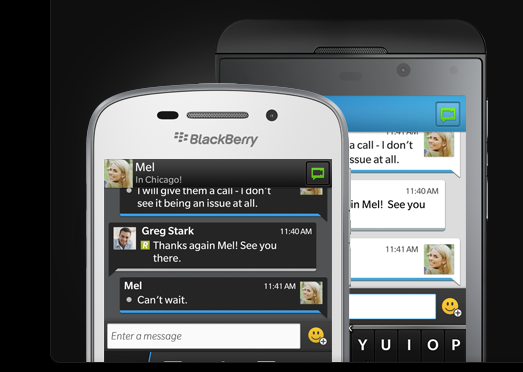BlackBerry Messenger for Android and iPhones

BlackBerry has at least one ace up its sleeve if the company’s Z30 smartphone fails to rekindle the business.
This weekend Android and iOS versions of the BlackBerry Messenger (BBM) software will be available for download on devices.
BlackBerry has been dropping hints about separating its social messaging app from its smartphone hardware since earlier in the year. Recently it tested the waters on selected Samsung phones in a pilot programme.
BlackBerry Messenger handles one-to-one and multi-person chat. People using the software can swap photos, other files and voice messages. The software also handles broadcast messages and status updates.
BlackBerry software pipeline
More features are in the pipeline including what the company describes as “Facebook-like” special interest forums. Individuals can set them up, so can brands and celebrities seeking to win social media publicity.
BlackBerry also promises Video and voice calling features in the coming months.
Work Space
BlackBerry Messenger is the company's second foray into the broader phone software world. In June the company launched Work Space for iOS and Android. The software creates a secure container on devices owned by employees. It resembles software included as standard on BlackBerry’s own 2013 devices.
Work Space lets workers access important company data without putting the information at risk. It also hands company IT professionals control over how devices are used for work, without interfering with the way people use the smartphones in their own time.
Sydney-based BlackBerry mobile technology leader Jonathan Jackson demonstrated the software in Auckland yesterday on iOS and Android tablets. He says Word Space is popular with large corporations and government departments, but is being picked up by anyone who has security or privacy concerns. One big recent regional sale was to the Australian Tax Office.
Work Space downloads from the iTunes or Google Play app store. In its basic form it includes a private web browser, mainly for working on intranets and anywhere else where data or privacy is essential. There are also client apps for email, calendar and task management. These are designed to look exactly like the stock apps on the device in question, usually they are repurposed version of the stock apps.
Safe behind the partition
All of these are apps sit in their own partition away from the device’s local OS. This makes life difficult for malware attacks, but there’s another important feature: employees can’t copy and paste important information and leak it to rivals or store as their own ‘insurance policy’.
The software runs a compliance test on the device and decides which applications can or can’t be used and it then automatically downloads any extra apps the company’s IT professionals decide are needed.
While Work Space is a VPN (virtual private network) it doesn’t act like a typical VPN from the user point of view. Jackson says its easy to move between Work Space apps because the container also acts as a single sign-on. That single sign-on also applies to the VPN, which explains why BlackBerry describes it as VPN-less. BlackBerry’s own Documents to Go suite comes as a standard part of Work Space.
Is software BlackBerry’s future
The once-mighty BlackBerry may now be a smartphone pygmy, but the company’s software remains popular and the brand is still recognised in board rooms and CIO circles where decisions are made on spending money. Making BBM widely available and taking ownership of the BYOD security market are two prongs in a strategy which the company hopes will help it regain momentum.
Member discussion